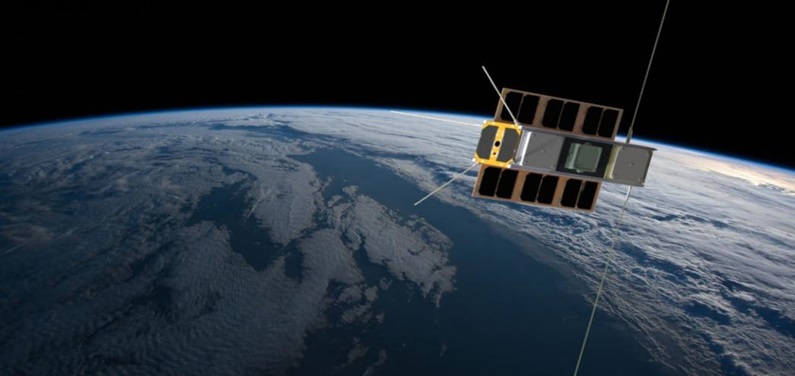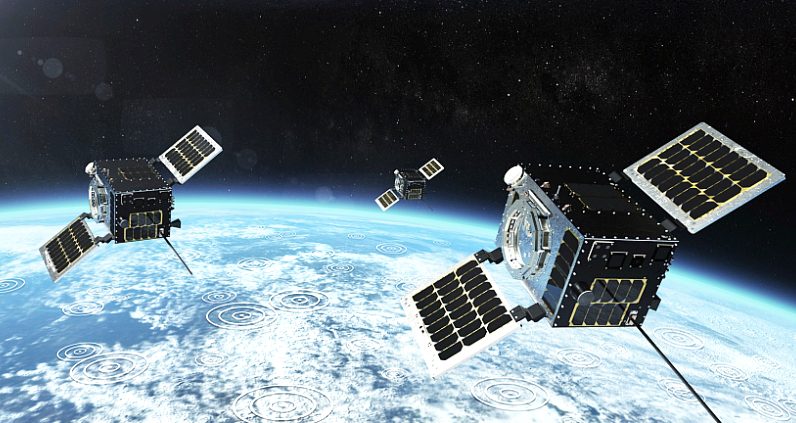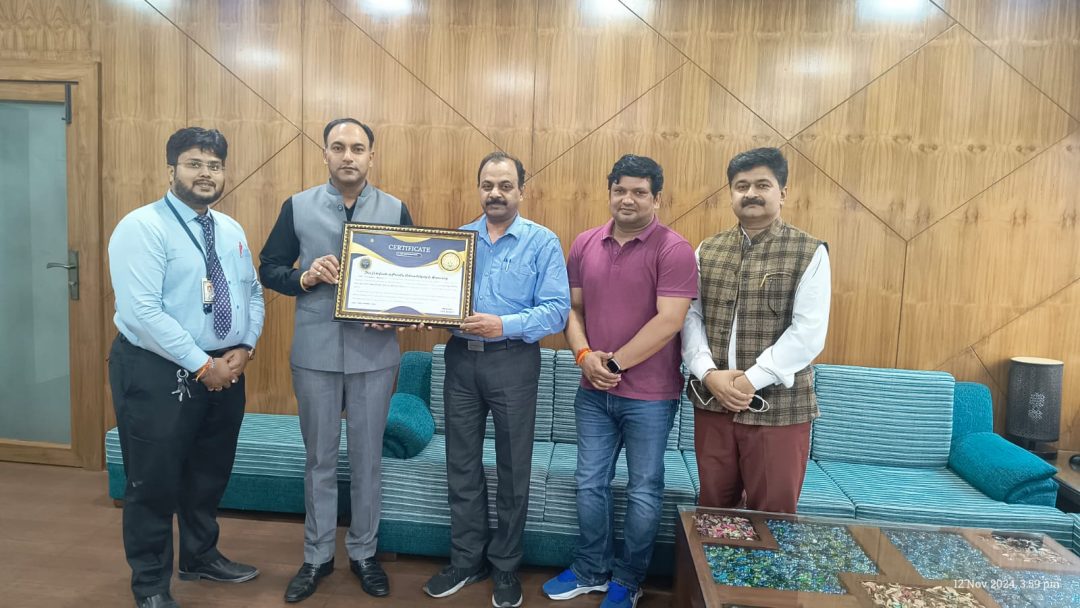❖ Introduction:
In the vast expanse of space, satellites have become instrumental in providing crucial communication, navigation, and remote sensing capabilities to our modern world. Until recently, satellite technology was dominated by large and expensive spacecraft, limiting accessibility to space-based services. However, a new era has dawned with the rise of small satellites, also known as CubeSats and nanosatellites. In this blog, we will explore the impact and potential of small satellites in revolutionizing satellite communication.
When scaling up or down their operations, organisations don’t need to acquire and maintain the newest hardware devices or operate their data centers since cloud infrastructure optimizes the hardware demands of data centers and offers huge flexibility. Because cloud providers handle standard infrastructure management activities like scaling, scheduling, patching, and provisioning, businesses can concentrate their time and energy on the business logic unique to their apps or processes.
To ensure maximum efficiency, cloud systems appropriately choose and allocate the appropriate resources to a task or application. The resources are elastic, scalable, and metered according to usage in almost real-time. The majority of the systems will be software, demand-based, and capable of dynamic, efficient network scaling. The earliest satellites were Geosynchronous Equatorial Orbit (GEO) spacecraft, which were launched in the late 1950s. Because of their synchronized movement with Earth, these satellites are sometimes known as geostationary because they appear to remain fixed in the sky. Positioned around 35,000 kilometers (22,000 miles) above the Earth’s surface, Geopolitical Orbiting (GEO) satellites employ a directional antenna on the ground that faces a fixed point in the sky. They have blackout zones near the poles and are unable to provide worldwide coverage due to the curvature of the planet.
In the landscape of Uttar Pradesh’s top 10 private universities, the engineering prowess of IIMT University’s engineering education stands out prominently; known for academic excellence, the best engineering university in Meerut marks its territory in the realm of innovation. Amidst this educational synergy, the era of small satellites emerges—a revolutionary stride in satellite communication. These compact marvels, developed in collaboration with academia, promise unparalleled connectivity, redefining the future of global communication and opening doors to new possibilities in the realm of space technology.
The International Maritime Organisation (IMO) initiated Inmarsat-1, the first commercial satellite communications system, in the late 1970s after seeing the need for more dependable satellite communication services for ships operating at sea.

1. The Emergence of Small Satellites:
Small satellites are miniature spacecraft, often with a size as small as a shoebox, that offer a cost-effective and agile approach to space missions. Initially conceived for educational and research purposes, these nanosatellites have now proven their capabilities in a wide range of applications, including communication, Earth observation, and scientific research.
2. Advantages of Small Satellites in Communication:

Traditional communication satellites have been substantial and costly to deploy. Small satellites, on the other hand, can be launched in constellations, creating a network of interconnected spacecraft. This “constellation approach” improves global coverage, reduces latency, and enhances overall system reliability and redundancy.
3. Global Connectivity and Internet Access:
Small satellite constellations play a pivotal role in bridging the digital divide and bringing internet access to remote and underserved regions. Companies such as SpaceX’s Starlink and OneWeb are deploying thousands of small satellites to create a global internet network, enabling high-speed connectivity in areas that were previously unreachable. The expansion of market prospects and the filling of coverage gaps in mobile devices will be facilitated by satellite connectivity.
IoT-NTN technology will be used in the initial wave of smartphones and other devices connected to satellites. IoT-NTN is intended for brief, low-bandwidth connections, such as those used for location sharing and two-way message delivery. The capability for 5G New Radio NTN (NR-NTN), which allows for greater data rates to support applications like real-time navigation, streaming, and video calls, will be added by satellite networks in the upcoming years. Numerous use cases for consumers, businesses, and industries will become available thanks to NR-NTN. Imagine being able to access material via your smartphone from any location in the globe, including very far-off places.
4. Space-Based Data Collection and Earth Observation:
Small satellites equipped with advanced sensors are revolutionizing Earth observation and data collection. They enable real-time monitoring of environmental changes, weather patterns, and natural disasters. This data is invaluable for climate research, disaster management, and precision agriculture.
The earliest satellites were Geosynchronous Equatorial Orbit (GEO) spacecraft, which were launched in the late 1950s. Because of their synchronized movement with Earth, these satellites are sometimes known as geostationary because they appear to remain fixed in the sky. Positioned around 35,000 kilometers (22,000 miles) above the Earth’s surface, Geopolitical Orbiting (GEO) satellites employ a directional antenna on the ground that faces a fixed point in the sky. They have blackout zones near the poles and are unable to provide worldwide coverage due to the curvature of the planet.
The International Maritime Organisation (IMO) initiated Inmarsat-1, the first commercial satellite communications system, in the late 1970s after recognizing the need for more reliable satellite communication services for ships operating at sea.
5. Precision Navigation and Location Services:
In addition to communication and observation, small satellites are enhancing global navigation systems. Their low cost and deployability make them ideal for augmenting existing satellite navigation constellations like GPS, Galileo, and BeiDou, providing more accurate and reliable positioning services.
6. Paving the Way for Innovative Space Missions:

The compact size and lower costs of small satellites open up opportunities for innovative space missions. These satellites can be used for scientific experiments, technology demonstrations, and space exploration missions, accelerating progress in space research and development.
❖ Conclusion:
The advent of small satellites has transformed the satellite communication landscape, democratizing access to space and empowering a new generation of space missions. These tiny spacecraft have demonstrated their potential in revolutionizing communication, Earth observation, and navigation systems. As technology continues to advance, we can expect even more innovative applications for small satellites, paving the way for a future where space exploration and connectivity become more accessible and sustainable for all.
There has been a recent increase in the number of small satellite and CubeSat launches into Low Earth Orbit (LEO) due to the declining costs of space access. With the help of these satellites, developers of remote Internet of Things applications now have more options, making satellite communication both technically and financially possible. CubeSats frequently use BPSK as a modulation technique because of its small size and tight power budget, as well as its comparatively simple and reliable performance when compared to other modulation types. While BPSK restricts the amount of data that can be transmitted, most remote IoT applications don’t care about this because they typically send brief status update messages on a regular basis.
In this era of small satellites, the sky is no longer the limit. As we continue to push the boundaries of space technology, small satellites will undoubtedly play a pivotal role in reshaping our world and beyond.
To gain more information on aerospace technologies – 🌐 click here:
Author: Mr. Rajni Verma,
HoD Aerospace Department, IIMTU













